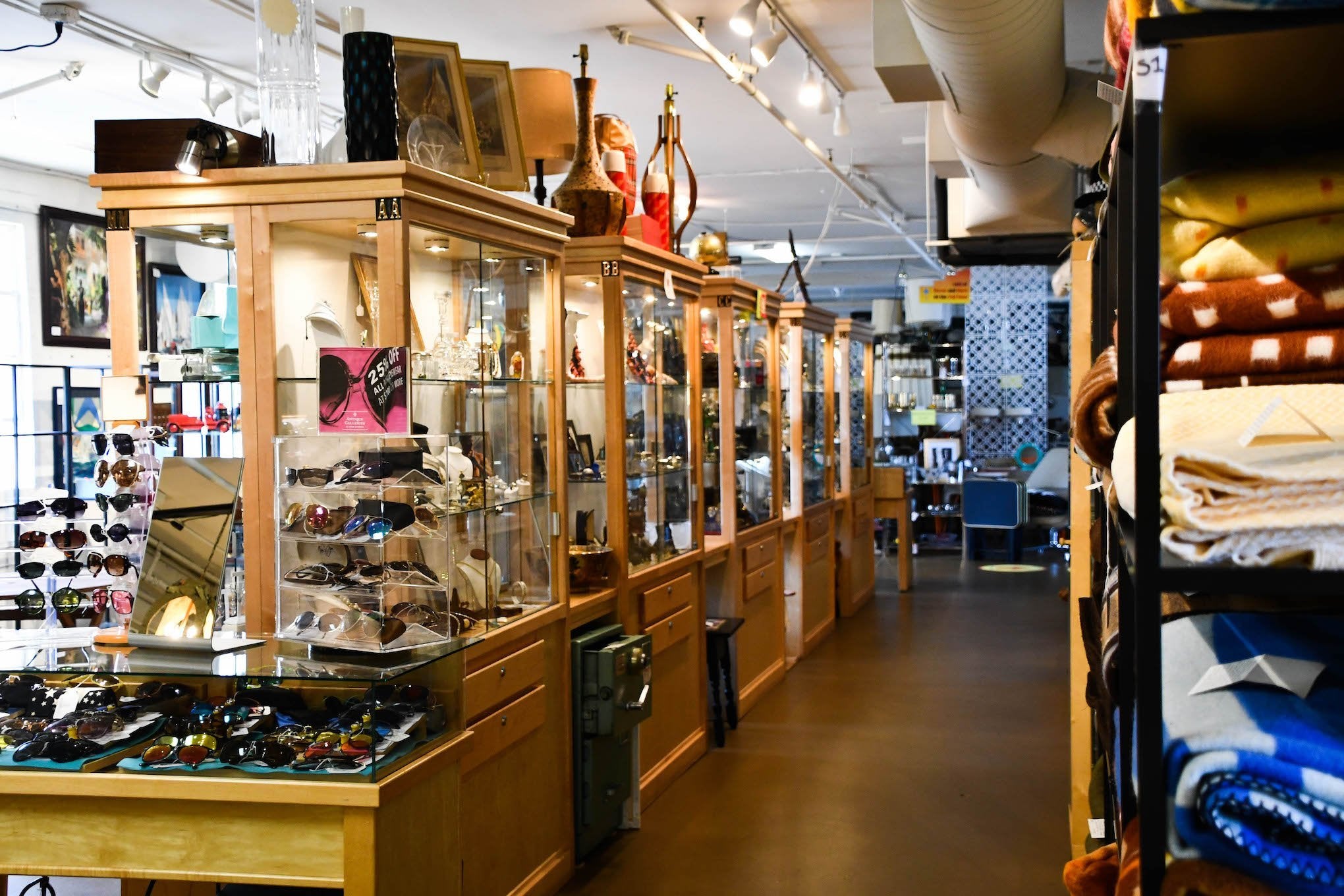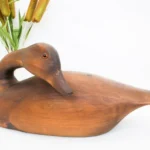
Open Daily 10am - 5pm
12,000sq.ft. of amazing items!
Free and easy parking!

In the hoary tradition of overfed journalists everywhere, it’s time for a top-10 list to end the year. Frankly, I’m not even sure I can count to 10 after all the eggnog that’s gone down the hatch over past weeks. However, here is my best shot at observations, predictions, and developments – past and future – in the antiques business.
1. Here in the desert, the number of antique dealers continues to shrink. Several closed their doors this past year and others are planning to retire or move in the months ahead. While that means some good deals will be out there in 2020 as these retailers liquidate their stocks, it’s also an unfortunate sign of the times. Whiling away an afternoon shopping for antiques is relaxing and returning home with something you never expected to find is part of the pleasure. But don’t worry. Some of us will remain in the game and are doing just fine.
2. Mid-century modern continues to dominate the local scene, but certainly not everywhere. While mid-mod remains the center of the designer universe in Palm Springs, it holds little sway as you head down the valley. Mid-century dealers will remain clustered on North Palm Canyon with a few near Sunny Dunes and others off Perez Road in Cathedral City. Nationwide, this look has pockets of urban enthusiasts but does not appear to be gaining strength. What’s next? I don’t know.
3. Auctions, both online and on-site, are popping up like weeds. The big boys (Christy’s, Sothebys) are becoming more and more fussy about the consignments they accept, setting the stage for smaller specialty auctioneers to feast off the crumbs. Online auction portals like invaluable.com have opened the auction market to worldwide bidders, effectively making retailers out of everyone looking to sell something. Once the purview of wholesale buyers, auctions have become resources for all.
4. EBay remains the giant in the online auction category but much less dominant than before. It has grown unwieldy and too protective of buyer interests at the expense of sellers. We’ve had or heard of numerous instances whereby items have been returned to sellers for no good reason despite an accurate online description, multiple photos, and a clearly checked “no returns accepted” box. The original idea was for feedback scores to identify devious sellers, but the feedback system has been diluted and all decisions left to eBay. I’m all for protecting buyers but eBay’s system has become unfair.
5. Old-school antiques continue to fade. Bronzes, crystal, porcelain, silver, statuary, and Victorian-era furniture are all categories on life support, at least here in the Coachella Valley. While small voices in the wilderness have argued that these categories will eventually return to prominence, we’ve seen few sparks of life. To be sure, there are certainly other parts of the country where demand for traditional antiques lives on, but not here. If you have collections of such items, don’t expect that your next luxury cruise will come from their sale.
6. Likewise, the collectible categories of old are equally moribund. Demand for brands such as Franklin Mint, Hummel, Lladro, Limoges and Royal Doulton has faded into virtual nothingless. If there is any business at all being transacted in these items, it is at thrift stores.
7. By now it’s no secret that millennials have accumulated enormous buying power and will be dominant consumer block for years to come. Unfortunately, they have little regard for craftsmanship, preferring instead to furnish their Internet mansions (those that have them) with IKEA, or nothing at all for those who don’t. Their interests run to experiences and technology with little left over for long-term acquisitions. If there’s an exception, it is modern and contemporary art, a category almost completely lacking in appeal, taste, and evidence of expertise (at least to me). Of course, if this last statement reminds you of the “If it’s too loud, you’re too old” aphorism, you may have good reason to regard my opinion with suspicion.
8. As for antique categories with legs, there remain a few. Vintage watches continue to sell in the $500-$5000 range with unusual characteristics or short production runs being enticements to buy. Decorative glass of all shapes and colors remains a staple of the antiques business, as does barware, bedding, costume jewelry, lighting, old-school kitchen accessories, and retro clothing, Surprisingly, some of the traditional men’s categories – books, coins, military and maritime – have remained stable even while the industrial look has wilted. Although our valley has never been a hotbed of Asian tourism, antiques from across the Pacific remain in demand.
9. Finally, it’s hardly a secret that 2020 will be a wildcard year in many respects. Political uncertainty, both domestically and abroad, will continue to play havoc with consumer confidence, and our economy is showing all the signs of near-term wobble. Insofar as nobody actually needs antiques, it may prove to be an unusually challenging year for those of us in the biz. On the other hand, many people shop for antiques for the same reason they go to movies: to forget about the chaos outside and enter into a world of small pleasures and calm waters. That, at least, is not likely to change.
10. See? I knew I couldn’t get all the way to 10.





We’ll email you about the latest events, sales, and general store updates.

Our antique gallery is located just south of downtown Palm Springs, with free parking and air conditioning throughout.
Open Daily: 10am – 5pm
505 E Industrial Pl.
Palm Springs, CA 92264
© Copyright Antique Galleries of Palm Springs 2024